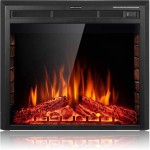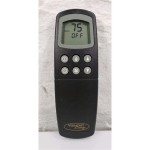Ventless Wall Mount Natural Gas Fireplace: A Comprehensive Overview
Ventless, or vent-free, wall-mounted natural gas fireplaces offer a convenient and aesthetically pleasing heating solution for various residential and commercial spaces. These appliances provide supplemental warmth and visual appeal without requiring a traditional chimney or venting system. Understanding the operational principles, safety considerations, installation guidelines, and maintenance requirements of these fireplaces is crucial for their safe and efficient use.
Unlike conventional fireplaces that exhaust combustion byproducts through a chimney, ventless fireplaces utilize advanced burner technology to achieve near-complete combustion. This process minimizes the production of harmful emissions such as carbon monoxide. Integrated oxygen depletion sensors (ODS) further enhance safety by automatically shutting down the unit if oxygen levels in the room fall below a predetermined threshold, typically around 18%.
The availability of wall-mounted models adds an additional layer of versatility. These fireplaces are designed to be easily installed on a wall, freeing up floor space and providing a modern, streamlined appearance. They are particularly suitable for apartments, condominiums, or smaller homes where floor space is at a premium. Furthermore, the wall-mounted design can contribute to a more even heat distribution throughout the room.
Key Point 1: Understanding Ventless Technology and Safety Features
The core principle behind ventless natural gas fireplace operation lies in its meticulous combustion process. Advanced burner designs and precise fuel-air mixture ratios are employed to ensure that the majority of the natural gas is converted into heat, water vapor, and carbon dioxide. The efficiency of this combustion process directly impacts the levels of pollutants released into the room. It is essential to select a model certified by recognized testing organizations, such as the Canadian Standards Association (CSA) or the American National Standards Institute (ANSI), to ensure compliance with stringent safety and performance standards.
Oxygen Depletion Sensors (ODS) are a critical safety component in ventless fireplaces. These sensors continuously monitor the oxygen levels in the room. If the oxygen concentration drops below the safe threshold, the ODS will automatically shut off the gas supply to the fireplace, preventing the buildup of carbon monoxide. The ODS functions on a thermocouple principle, where a small pilot flame heats a thermocouple, generating a millivolt current. This current keeps a gas valve open. When oxygen levels decrease, the pilot flame weakens, reducing the current and causing the gas valve to close. Regular inspection and maintenance of the ODS are crucial to ensure its proper functioning.
While ventless fireplaces are designed to be safe, it is imperative to adhere to the manufacturer's instructions and local building codes. Proper ventilation is still necessary, even with ventless models. A common misconception is that ventless means no ventilation is needed. While they don't require a chimney, natural air circulation is crucial to prevent the build-up of moisture and other combustion byproducts. Cracking a window or door during operation can provide this necessary ventilation. Furthermore, carbon monoxide detectors should be installed in the vicinity of the fireplace to provide an extra layer of safety.
It is important to note that ventless fireplaces are intended for supplemental heating and should not be used as the primary heating source. Extended use in poorly ventilated spaces can lead to a build-up of moisture and other combustion byproducts, potentially impacting indoor air quality. Periodic inspections by a qualified technician are recommended to ensure the fireplace is operating correctly and that all safety features are functioning as intended.
Key Point 2: Installation Considerations and Requirements
Installing a ventless wall-mounted natural gas fireplace requires careful planning and adherence to specific guidelines. The first step is to determine a suitable location on the wall. The location should be free from obstructions, such as curtains or furniture, and should provide adequate clearance from combustible materials. Consult the manufacturer's instructions for specific clearance requirements. The wall must be structurally sound and capable of supporting the weight of the fireplace unit.
Natural gas line connections must be performed by a licensed and qualified gas fitter or plumber. Incorrect connections can lead to gas leaks and pose a serious safety hazard. The gas supply line should be properly sized to handle the gas consumption of the fireplace. A shut-off valve should be installed upstream of the fireplace for maintenance and emergency purposes.
Many wall-mounted fireplaces come with mounting brackets and hardware. It is essential to use the provided hardware and follow the manufacturer's instructions precisely. Ensuring that the fireplace is securely mounted to the wall is critical for safety. Using a level during installation will ensure that the fireplace is properly aligned. Some models may require electrical connections for features such as a blower fan or remote control. These electrical connections should be performed by a qualified electrician in accordance with local electrical codes.
Local building codes may have specific requirements for the installation of ventless fireplaces. It is crucial to obtain the necessary permits and inspections before installing the fireplace. Failure to comply with building codes can result in fines and require the unit to be removed. The installation process also includes testing the gas connections for leaks. A gas leak detection solution should be applied to all gas connections to ensure there are no leaks. Any leaks detected should be immediately repaired by a qualified gas fitter.
After installation, it is important to perform a test run of the fireplace to ensure it is operating correctly. Observe the flame pattern and check for any unusual noises or odors. Refer to the manufacturer's troubleshooting guide if any issues are encountered. Familiarize yourself with the fireplace's controls and safety features. Understanding how to operate the fireplace and respond to potential issues is crucial for safe and efficient use.
Key Point 3: Maintenance and Care for Optimal Performance and Longevity
Regular maintenance is essential for ensuring the continued safe and efficient operation of a ventless wall-mounted natural gas fireplace. A consistent maintenance schedule will help prevent performance issues, extend the lifespan of the fireplace, and ensure that safety features remain effective. The frequency of maintenance tasks will depend on the usage of the fireplace, but certain tasks should be performed at least annually.
Cleaning the burner assembly is a critical maintenance task. Over time, dust, debris, and soot can accumulate on the burner, affecting its performance and combustion efficiency. Before cleaning the burner, ensure that the gas supply to the fireplace is turned off. Use a soft brush or vacuum cleaner to remove any debris from the burner ports. Avoid using harsh chemicals or abrasives that could damage the burner surface. Refer to the manufacturer's instructions for specific cleaning recommendations.
Inspecting the Oxygen Depletion Sensor (ODS) is also an important part of routine maintenance. Check the pilot flame to ensure it is clean and strong. A weak or flickering pilot flame may indicate a problem with the ODS. If the pilot flame is not burning properly, consult the manufacturer's troubleshooting guide or contact a qualified technician. Never attempt to bypass or disable the ODS, as this could compromise the safety of the fireplace.
The exterior of the fireplace should also be cleaned regularly to maintain its appearance. Use a soft cloth and mild detergent to wipe down the surface. Avoid using abrasive cleaners or solvents that could damage the finish. Inspect the gas connections for leaks periodically. Apply a gas leak detection solution to all connections and check for bubbles. If any leaks are detected, immediately turn off the gas supply and contact a qualified gas fitter.
Consider professional servicing at least once a year. A qualified technician can perform a thorough inspection of the fireplace, clean and adjust the burner, check the ODS, and ensure that all safety features are functioning correctly. Professional servicing can help identify potential problems before they become serious and ensure that the fireplace is operating safely and efficiently.
Finally, always store the manufacturer's instructions in a safe and accessible location. The instructions contain valuable information about the fireplace's operation, maintenance, and troubleshooting. Familiarize yourself with the instructions and refer to them whenever you have questions or concerns. Following the manufacturer's recommendations is crucial for ensuring the safe and reliable operation of your ventless wall-mounted natural gas fireplace.

Vent Free Archives SÓlas Contemporary Fireplaces
:max_bytes(150000):strip_icc()/ventless-gas-fireplaces-4160746-hero-f9d4bdcd9bd446eb84406de306f790ba.jpg?strip=all)
How To Pick Out A Ventless Gas Fireplace

Empire Boulevard 30 Inch Slim Line Wall Mounted Recessed Vent Free Gas Fyre Direct

Napoleon Plazmafire Vent Free Wall Mount Natural Gas Fireplace With Painted Black Rectangular Surround Contemporary

Empire Boulevard 30 Inch Slim Line Wall Mounted Recessed Vent Free Gas Fyre Direct

Duluth Forge 28 In 26 000 Btu Ventless Linear Wall Gas Fireplace With Thermostat Black 110037 The Home Depot

Considering A Ventless Gas Fireplace Here S What You Need To Know Bob Vila

Empire 29 Loft Small Vent Free Gas Fireplace 10 000 Btu Vflc10in32 Hvacdirect Com

Duluth Forge Dual Fuel Ventless Linear Wall Gas Fireplace With Log 26 000 Btu T Stat Control Model Df300l Com

Empire 30 Boulevard Sl Vent Free Linear Gas Fireplace Us
Related Posts








